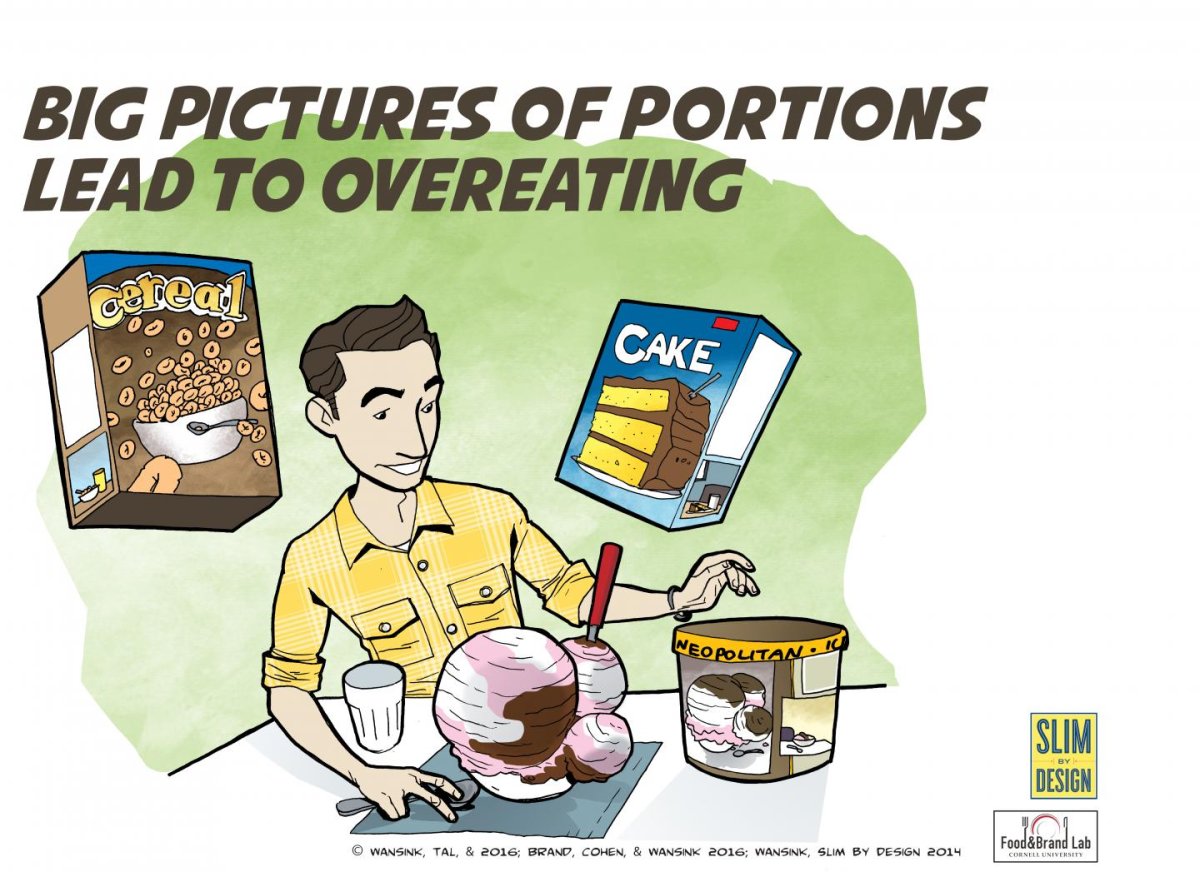There’s the picture perfect photo of two layers of chocolate cake topped with vanilla frosting and sprinkles on top. But is that what’s accounted for on the nutrition facts label?

New research is warning that food packaging labels are way off when it comes to calories and portion sizes. They often leave out toppings, sauces and condiments that rack up the calories, sodium, sugar and fat in a dish.
The images on packaging don’t help either: the food is always presented with side dishes, according to scientists out of Cornell University’s Food and Brand Lab.
There, scientists have picked apart portion sizes, advertising and nutritional information for packaged and fast food in playful studies.
“If what is seen can be more powerful than what is said, these effects should be even stronger for what is seen and not said. This is the case with many of the extras that are depicted on packaging, such as sauces on main dishes, syrups on pancakes, dips with chips, sprinkles on ice cream and frosting on cake,” the researchers wrote.
“If we see a slice of cake smothered in frosting on the cake box, we think that is what is normal to serve and eat, but that’s not what is reflected in the serving size recommendation on the nutrition label,” lead researcher, Dr. John Brand, said in a statement.
If consumers actually counted the calories in the slice of cake depicted on a cake mix box, it’s actually a whopping 135 per cent more calories than the recommended serving size on the box.
READ MORE: What Health Canada’s ‘easier to read’ nutrition labels would look like

Get weekly health news
Brand and his team conducted a series of experiments with the help of 72 university students along with 44 people who work in the food service industry. The volunteers had to guess how big portion sizes of cake were based solely on looking at the packaging.
Turns out, the volunteers often overestimated how big serving sizes should be – to the tune of an extra 122 calories.
If the packaging noted that “frosting is not included on the nutritional labelling,” their estimates were much more accurate though.
Portion sizes are deceiving, though. A large bottle of Gatorade may contain two servings, but most people end up drinking the whole thing in one go, for example. It’s hard to tell how many servings of chips you have when you open a bag, too.
Canadians aren’t very skilled at identifying proper portion sizes, according to a 2012 York University study.
READ MORE: How to read a nutrition label
In the research, scientists interviewed 145 Canadians from various ethnicities to analyze their eating habits and understanding of how much they were eating on a daily basis. The participants also revealed how much of something – such as pizza or pasta – they’d eat in one sitting.
When they were asked to select what they thought was a proper serving, the group was wrong across the board in estimating the total number of servings they were eating in a day.
Consumers tended to look at one serving as how much they would normally eat at one time instead.
Here’s what average portion sizes look like:
– One serving of beef, chicken or fish is three ounces, or about the size of a deck of cards
– One serving of pasta or rice is about a cup, uncooked, or about the size of a tennis ball
– One serving of cooked vegetables is about half a cup, or the size of a baseball
– If you’re snacking on dried fruit or nuts, they pack a lot more calories than fresh fruit. A quarter of a cup is one serving, or about the size of a ping pong ball
– A perfectly portioned baked potato should be the size of a computer mouse
– A serving of cheese, perhaps for a midday snack, is about the size of six dice
A portion of fish, which could be your protein fix at dinner, is about the size of a checkbook
carmen.chai@globalnews.ca
Follow @Carmen_Chai









Comments